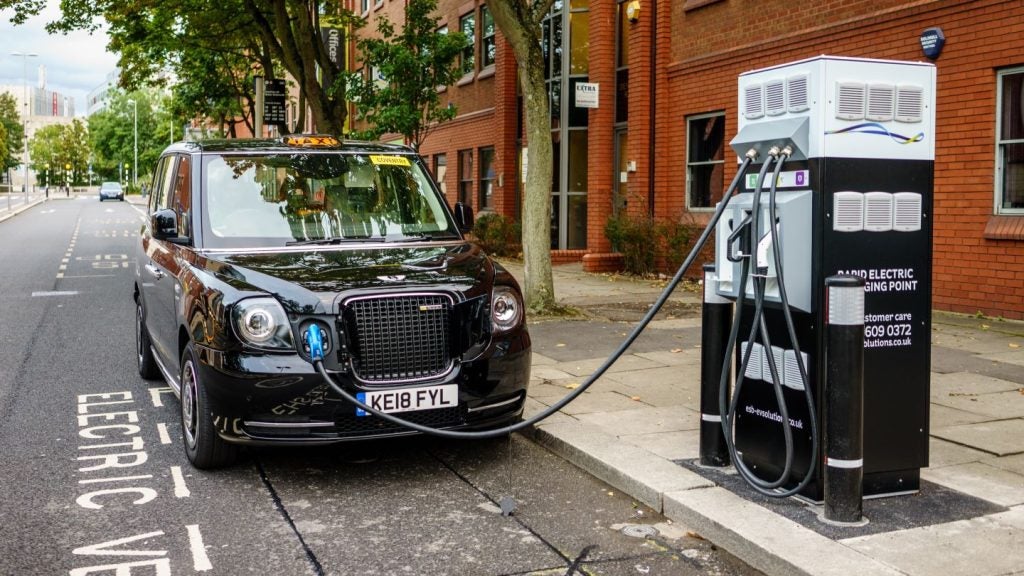With the advent of electric vehicles (EV) entering the construction, agriculture and mining sectors (CAM), what does the future hold for the industry, and what effect will this have on the used machinery market globally? Jonnie Keys, from market-leading Euro Auctions comments on the future of the industry.
The Kyoto Protocol is the objective of the United Nations Framework Convention on Climate Change to reduce the onset of global warming by reducing greenhouse gas concentrations.
In order to comply with this, the EU – in step with the rest of the world – is striving to cut emissions, making road transport cleaner by setting strict new carbon dioxide emissions standards for all vehicles.
In early 2018, the UK government launched a consultation on proposals to pass new European limits on engine emissions on Non-Road Mobile Machinery (NRMM). This paved the way for new emissions standards for carbon monoxide, nitrogen oxides and particulate matter from all NRMMs ranging from lawnmowers to construction machinery, to be brought into UK law, with the aim to ensure that from 2030 onwards new vehicles will emit on average 37.5% less CO2. These initiatives in turn have paved the way for new technologies to drive road-going and non-road-going vehicles, such as cleaner fuel, hybrid fuel systems and battery power.
The on-road EV industry is heading for a vicious fight, with private cars set to see a collapse in sales as more people move to cities using more shared transport, rather that running private vehicles. In contrast, off-road electric vehicle OEMs are looking ahead to prosperous growth, in particular, for the construction, agriculture and mining sectors, known as CAM.
Compound Growth
Over the next 10 years, the EV market in the CAM sector is predicted to burgeon.
How well do you really know your competitors?
Access the most comprehensive Company Profiles on the market, powered by GlobalData. Save hours of research. Gain competitive edge.

Thank you!
Your download email will arrive shortly
Not ready to buy yet? Download a free sample
We are confident about the unique quality of our Company Profiles. However, we want you to make the most beneficial decision for your business, so we offer a free sample that you can download by submitting the below form
By GlobalDataThe sector has already started employing robots, drones, hybrid and pure EVs, with approximately 15% of CAM vehicles rolling off the production line being electric. Over the next 10 years, that number is expected to increase; in 2029, the numbers are predicted to be close to 100%.
With such a huge demand for new clean electricity to power those vehicles, further demands will be put on new technology to generate that power, on and off grid, with delivery of that power requiring new infrastructure.
The CAM market is projected to record a CAGR of 4.52%, with its market size reaching in excess of $200bn (€177.6bn) by 2029, up from $146.17bn in 2018.
The CAM vehicle business will grow more than six-fold in value by 2029, grabbing records for both the highest-volume EVs and the highest unit value.
OEMs are innovating at a frenetic pace, with some of the minor players innovating faster than many of the giants, of which a few seem to be sleeping through this future-proofing period.
Which technologies win? Which sectors go straight to pure electric and which need the hybrid interim stage? With even 300kW mining trucks working well as pure electric, what is the place for fuel cells?
Robot Farmers
The industry is currently moving from the old ‘electric drive’ designs to full hybrid and pure electric.
Electrification is also crossing over, with the journey toward automation and ultra-precision agriculture. With issues such as Brexit, demographic pressures and ageing populations, farmers may be driven toward ‘robot farming’.
These factors, along with increasing environmental concerns over the use of herbicides, may mean that in 10 years, the best-selling EVs in numbers are likely to be robot weeding machines.
Meanwhile, the most expensive EVs will be monster autonomous load-haul-dump machines in the mining sector, with the electricity to power these vehicles also becoming cleaner, with massive, renewable generation sites set up off grid, right next to the locations where power is needed.
The Expanding Market
The earthmoving equipment category is the largest segment of the CAM market, by category, with much of the construction equipment used to carry, dig, spread or move earth or materials.
In comparison, material-handling equipment is the fastest-growing segment, and includes machines that manufacture, store, stack, distribute, deliver and recycle.
Road rollers of all sizes and specifications are the fastest-growing single item of equipment in the market, with increasing use attributed to the need for highway infrastructure in developing countries such as India and China. Large road-development projects – such as the China-Pakistan Economic Corridor, which aims to connect China with Central Asia, creating a modern ‘silk route’ – are also a contributor to this factor.
Upcoming infrastructural projects and increased government spending have led to an increase in construction activities globally. With the advances in technology, CAM equipment is becoming more fuel-efficient with lower emission levels, enhanced safety and better handling features.
Rise of the Machines
The Internet of Things (IoT) phenomenon will be the next factor to determine how machines best serve the industries.
The definition of IoT is the interconnection via the internet of computing devices embedded in everyday objects, enabling them to send and receive data. This emerging technology will mean that machines will become ‘self-managing’, and reshape the CAM machinery sectors, in as much as they will be potentially capable of: driving autonomously, self-driving in such a way to be highly fuel-efficient, using GPS to navigate, delivering output more efficiently, recording operating data to produce delivery invoices in the haulage sector, being more secure and, in time, being able to self-order spare parts for routine services and then telling the operator that they need to have fitted.
Emissions Regulations
Engines conforming to Tier-5 emission regulation are projected to have the largest market share of all current construction equipment in use by 2029.
North America, Canada and Mexico are speculated to have enforced these regulations by 2025. Additionally, it is speculated that Japan will also follow these regulations once they are in place.
Selective Catalytic Reduction is projected to be the largest segment of the construction equipment market by after-treatment devices, due to the stringent emission regulations that are expected to be implemented in the Asia-Pacific region.
Construction equipment with 200-400hp power output is projected to be the fastest-growing segment, with the market in Asia Oceania expected to grow at a faster rate as requirements for infrastructure development in China and India grow steadily.
Infrastructure is not only the largest, but also the fastest-growing segment of the construction equipment market by application. Equipment such as crawler excavator, wheeled loader, motor grader, crawler dozer, asphalt finisher and road roller are used to develop bridges, roads and tunnels. Due to the increase in infrastructure projects, demand for this equipment will also increase.
Market Domination
Asia-Pacific is the largest market for rental construction equipment. With increasing population and urbanisation, demand for infrastructure development, housing and office space in this region is projected to increase significantly over the next few years, making it the largest rental market.
The Asia-Pacific region is estimated to dominate the OEM construction equipment market, and is projected to remain the largest market for construction equipment in 2029. This growth can be attributed to improving socio-economic conditions in emerging economies such as China and India.
The Middle East is expected to record the fastest CAGR during this period, because of large infrastructure projects planned in Qatar, the UAE and Saudi Arabia.
The construction equipment market is dominated by a few global players and comprises several regional players. Key manufacturers include Caterpillar (US), Komatsu (Japan), Terex (US), Volvo Construction Equipment (Sweden), Hitachi Construction Machinery (Japan), XCMG (China) and Zoomlion (China).
Caterpillar has long been the dominant global player in the construction equipment market, with a wide portfolio of innovative and technologically advanced products. During the next 10 years, it is likely to remain the largest player in the market, although Asian players such as XCMG and Zoomlion are expanding into developed markets to diversify their revenue streams. Due to their operational efficiency, these regional players are expected to challenge the established players globally.
What next?
With the advent of cleaner fuels and a regulated reduction in emissions, where do machines that no longer comply go to die? The quick answer is possibly Africa, India and parts of the Far East. However, large numbers will end up in the hands of owner-operators for small contracting uses, and possibly on private land.
One thing certainly is true about the used machinery market and the auction community: regardless of machine, its year, hours, condition or compliance with legislation, there will always be a buyer for that lot, somewhere in the world.
So, where do diggers really go to die? That is quite possibly the subject of the next opinion piece!







